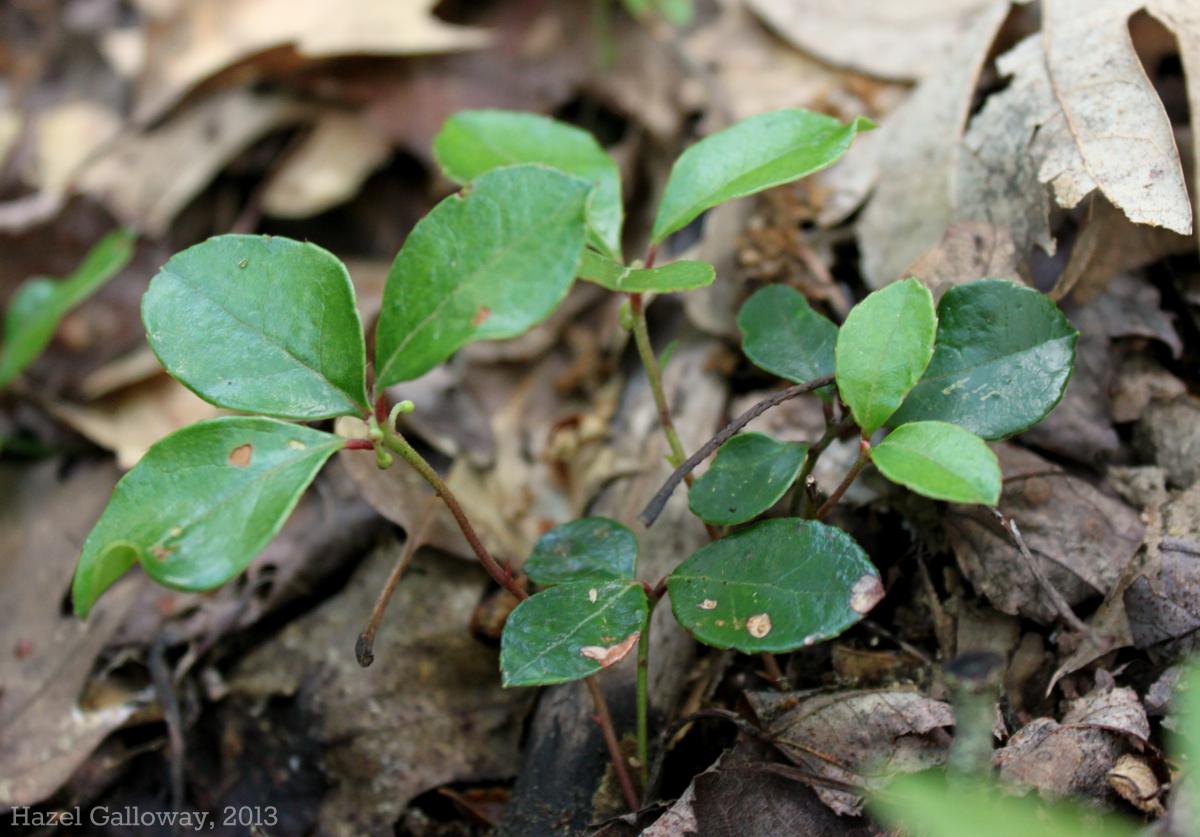 The american wintergreen is likely one of the most easy-to-identify plants ever to become the Organism of the Day. This small, spreading perrennial is named for the strong scent of wintergreen released when its leaves are crushed or bruised. The source of the distinctive fragrance is large quantities of the chemical methyl salicylate, which is present in many plants in smaller amounts. At one point, the wintergreen plant was a major source of methyl salicylate for use in medicines and fragrances; however, today the chemical is mainly produced synthetically. Distillations of the oil in wintergreen leaves have been used as everything from a diuretic to a stimulent, and are particularly effective as an anti-inflammatory agent (methyl salicylate is closely related to the active ingredient in aspirin). Traditionally, the leaves have been used as poultices to ease arthritis and muscle soreness, but their effectiveness was never proven. In addition to medicinal purposes, the oil is also a common food flavoring and much-used in perfumes and toothpastes.
The american wintergreen is likely one of the most easy-to-identify plants ever to become the Organism of the Day. This small, spreading perrennial is named for the strong scent of wintergreen released when its leaves are crushed or bruised. The source of the distinctive fragrance is large quantities of the chemical methyl salicylate, which is present in many plants in smaller amounts. At one point, the wintergreen plant was a major source of methyl salicylate for use in medicines and fragrances; however, today the chemical is mainly produced synthetically. Distillations of the oil in wintergreen leaves have been used as everything from a diuretic to a stimulent, and are particularly effective as an anti-inflammatory agent (methyl salicylate is closely related to the active ingredient in aspirin). Traditionally, the leaves have been used as poultices to ease arthritis and muscle soreness, but their effectiveness was never proven. In addition to medicinal purposes, the oil is also a common food flavoring and much-used in perfumes and toothpastes.
Gaultheria procumbens is small for an evergreen, rarely exceeding 10-13 cm in height. Although around the station, they are most commonly found as individual plants (or connected by underground rhizomes), in other environments they have been known to form creeping, rhizomatous mats. Glossy, leathery, elliptical leaves occur alternately on their short stems, which can sometimes appear whorled due to the density of leaves near the end of the stem. In mid- to late-summer, small white urn-shaped flowers appear on the tips of short stems produced from leaf axils. The flowers are hermaphroditic and are pollinated by insects, although they are also capable of self-fertilization. These give way to large red berries, up to 1.3 cm in diameter, which persist into the winter. Wintergreen plants have a remarkable tolerance for cold, able to survive temperatures as low as -35°C (-31°F) with minimal damage.
On the mountain, the only other plant with a noticable wintergreen fragrance is the sweet birch (Betula lenta), which also produces large amounts of methyl salicylate. It has been speculated that the chemical serves as an agent to deter herbivores.
G. procumbens, which also commonly goes by the names of teaberry and checkerberry, is native to much of the east coast of the United States and north into Canada. It does best in moist, organically rich soil in dappled shade or in the understory of deciduous forests. This sample was found in the woods near Clayton.
Article by Hazel Galloway
Sources:



